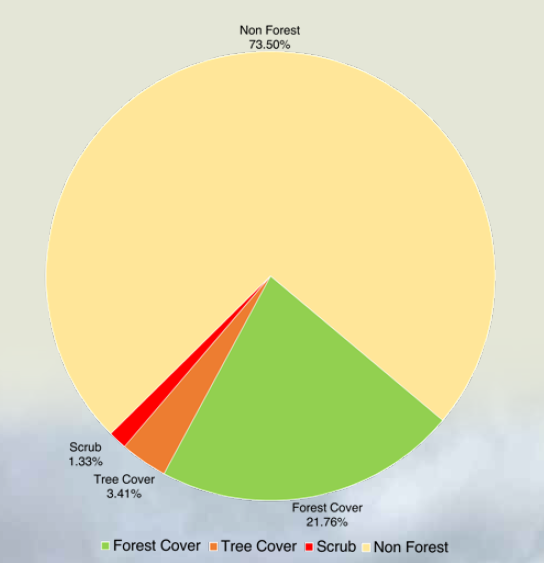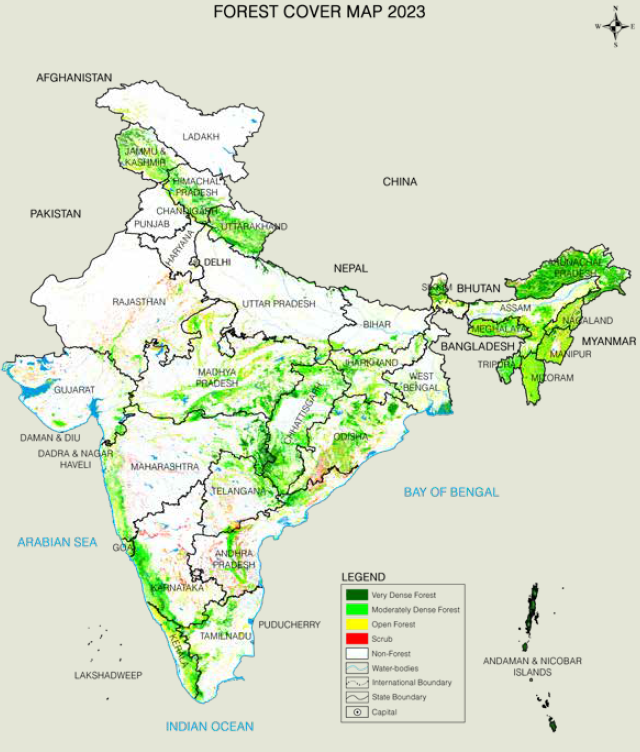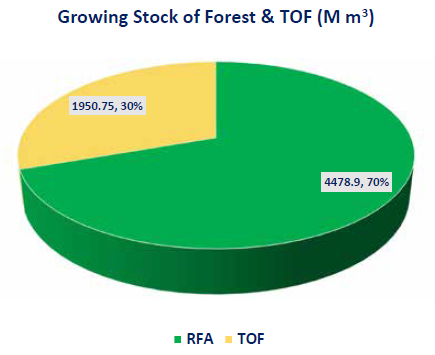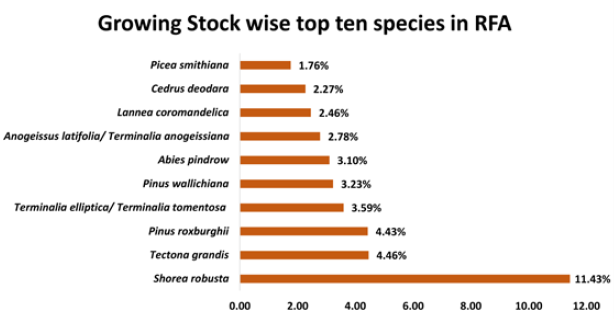Recently, India State of Forest Report 2023 (ISFR 2023) has been released.
FSI launched a National Forest Inventory in 2002, with the onset of the 10th five-year plan.
|
Classification of forest cover |
|
|
Types |
Canopy density |
|
Very Dense Forest (VDF) |
Equal to or more than 70% |
|
Moderately Dense Forest (MDF) |
40-70% |
|
Open Forest (OF) |
10-40% |



TOF is the extent of forest cover outside the Recorded Forest Area(RFA) & Green Wash( GW) and tree cover.

|
Largest forest and tree cover states( Area wise) |
|
|
Largest forest cover states (Area wise) |
|
|
Largest tree cover states (Area wise) |
|
|
Largest forest cover states (percentage wise) |
|
21 States and UTs have shown an increasing trend in tree cover, which indicates that agroforestry, is being promoted in these States.

Arunachal Pradesh has maximum growing stock (457.83 M m3) in forests, followed by Uttarakhand (400.02 M m3), Chhattisgarh (398.54 M m3) and Madhya Pradesh (387.18 M m3).



As compared to the base year of 2005, India has already reached 2.29 billion tonnes of additional carbon sink as against the target of 2.5 to 3.0 billion tonnes by 2030.
Soil organic carbon is the largest pool of forest carbon accounting for (55.06%) followed by Above Ground Biomass (AGB) (32.69%), Below Ground Biomass (BGB) (10.09%), Litter (1.48%) and Dead Wood (0.78%).


Bamboo cover has been estimated for the first time and included in Tree cover.
In 2019, National Disaster Management Plan (NDMP) by National Disaster Management Authority (NDMA) recognised forest fires as one of the national disasters.
